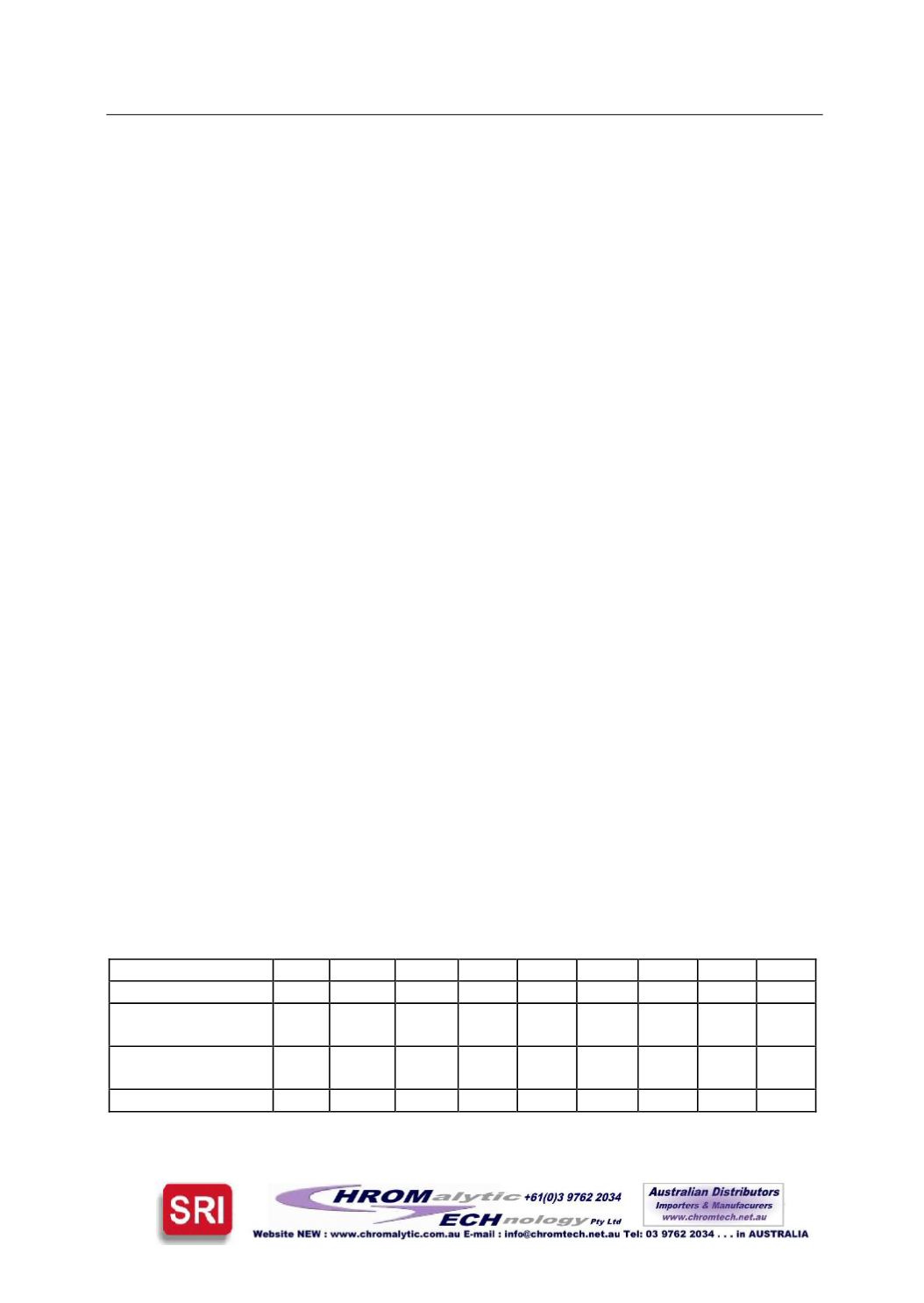
AdvancedGasChromatography–Progress inAgricultural, Biomedical and Industrial Applications
44
EffectiveNumber ofTheoretical Plates
Open-tubular columns generally have a larger number of theoretical plates. The
effective
number of theoretical plates
,N
eff
, characterizes open-tubular columns.
N
eff
=16(V
R
’/w
b
)
2
(2)
whereV
′
R
the adjusted retentionvolume.
SeparationFactor
The
separation factor
(S) describes the efficiencyof open-tubular columns:
S= 16(V
R
’/w
b
)
2
=16(t
′
R
/w
b
)
2
(3)
whereV
′
R
is the adjusted retentionvolume and t
′
R
is the adjusted retention time.
8. Preparationof columns
The most used technique for coating supports with high concentrations (>15%) of viscous
phases is solvent evaporation. This technique leads to auniformphasedeposition. The steps
to follow arepresentedbelow (Grob&Barry, 2004).
1.
Prepare a solutionof known concentrationof liquidphase in the suitable solvent.
2.
Add thedesired amount of solid support in aknownvolumeof the solution.
3.
Transfer themixture in aBüchner funnel, inorder to remove the solvent excess.
4.
Measure thevolumeof filtrate.
5.
Dry the “wet”packing to remove residual solvent.
6.
Calculate themass of liquidphase retainedon the support.
This technique allows obtaining auniform coatingof a support andminimizes the oxidation
of the stationaryphaseduring column.
9. The technologyof capillarycolumns
The widespread use of fused silica for capillary columns is because it is inert compared to
other glasses. In 1986 Jennings published a comparison of fused silica with other glasses,
such as soda-lime, borosilicates and lead. Fused silica is formed by introducing pure silicon
tetrachloride into a high-temperature flame followed by reaction with the water vapour
generated in the combustion (Jennings, 1997). On the surface they have distinguished three
types of silanol groups: adsorptive, strong, weak or none. The composition of some glass
and silicaarepresented inTable 7.
Glass
SiO
2
Al
2
O
3
Na
2
O K
2
O CaO M
g
O B
2
O
3
PbO BaO
Soda-lime
68
3
15
-
6
4
2
-
2
Borosilicate
(Pyrex 7740)
81
2
4
-
-
-
13
-
-
Potash soda-lead
(Corning 120)
56
2
4
9
-
-
-
29
-
Fused silica
100
Table 7. Compositionof someglass and silica (Jennings, 1986)


